Slow Cooker Barbecue Chicken Drumsticks
Slow Cooker Barbecue Chicken Drumsticks: Marinade, Cooking Time, Temperature & Sauce Ideas

There’s something primal and comforting about sinking your teeth into a juicy, saucy drumstick. As a chef, I’ve served versions of barbecue chicken in high-end restaurants and humble backyard gatherings alike, but nothing delivers consistent tenderness and flavor like the slow cooker method. It’s nearly foolproof, requires little monitoring, and produces drumsticks that fall off the bone and are soaked in smoky-sweet flavor.
- Why Barbecue Chicken Drumsticks Are a Must-Try for Slow Cooker Beginners
- Essential Ingredients and Tools You’ll Need for Success
- How to Prepare and Marinate Chicken Drumsticks for Maximum Flavor
- Step-by-Step Slow Cooker Method: From Raw to Fall-Off-the-Bone
- Marinade vs. Sauce: When and How to Use Both Correctly
- Time and Temperature Table for Drumstick Perfection
- Microwave Method: Emergency Barbecue on the Fly
- Pressure Cooker or Instant Pot Version
- Stove-Top or Cast Iron Method
- Oven-Baked Drumsticks: Classic and Convenient
- Common Mistakes and How to Avoid Them
- Sauces and Seasoning Combinations That Work Every Time
- Serving Suggestions and Side Pairings That Elevate the Dish
- Creative Variations from My Kitchen to Yours
- How to Store, Freeze, and Reheat Without Losing Quality
- The Role of Texture, Aroma, and Finish: What Makes It Restaurant-Worthy
- Turning a Rustic Dish Into an Elegant Dinner
- FAQ: 15 Questions I’ve Been Asked as a Chef (and My Answers)

Why Barbecue Chicken Drumsticks Are a Must-Try for Slow Cooker Beginners
If you’re just starting with slow cooking, barbecue drumsticks are a perfect entry point. Here’s why:
- Beginner-friendly: No searing, no special tools—just marinate and set it.
- Affordable and available: Chicken drumsticks are inexpensive and easy to find.
- Deep flavor payoff: The slow cooker allows time for marinades and sauces to fully infuse the meat.
- Versatile finish: You can broil, bake, grill, or serve them straight from the crock.
- Crowd-pleasing: This dish is universally loved, from kids to picky adults.
When cooked low and slow, drumsticks become silky and succulent. If you’ve never used a slow cooker before, this is the perfect recipe to learn timing, layering flavor, and slow-roasting technique.
Essential Ingredients and Tools You’ll Need for Success
In my kitchen, I always start with fresh, skin-on chicken drumsticks. The skin adds richness and helps lock in moisture during slow cooking. While the recipe is forgiving, having the right ingredients and tools on hand makes all the difference. Over the years, I’ve narrowed it down to a few essentials that guarantee consistent results.
For the marinade and cooking base, I rely on:
- Barbecue sauce – A thick, tomato-based version works best as a foundation.
- Apple cider vinegar – Adds a gentle tang to balance sweetness.
- Brown sugar or honey – For depth and caramelization.
- Worcestershire sauce – My go-to for that extra umami edge.
- Minced garlic and onion – Always fresh, never powdered if I can help it.
- Smoked paprika – For that essential barbecue aroma without needing a grill.
- Kosher salt and cracked black pepper – Always season the meat, not just the sauce.
Tools:
- 6-quart slow cooker
- Tongs
- Whisk and mixing bowl
- Optional broiler tray or cast iron skillet
- Meat thermometer
- Saucepan (optional)
These are simple, reliable tools you’ll return to every time you cook meat in a slow cooker.

How to Prepare and Marinate Chicken Drumsticks for Maximum Flavor
Marinating drumsticks is more than a flavor boost—it’s the first stage of tenderizing and building complexity. I usually create a marinade with barbecue sauce, apple cider vinegar, a spoonful of Dijon mustard, brown sugar or honey, garlic, and Worcestershire sauce. The key is balance: sweetness, tang, and savoriness working together.
I place the drumsticks in a sealable bag or a glass bowl, pour in the marinade, and massage it into the chicken. I cover and refrigerate for at least 4 hours—overnight if possible. Turning the drumsticks once or twice helps distribute flavor. Before slow cooking, I always let the meat sit out for 15 minutes to take the chill off, which helps ensure even cooking.
Step-by-Step Slow Cooker Method: From Raw to Fall-Off-the-Bone
To begin, I layer sliced onions in the base of the slow cooker. This does two things: it infuses the chicken with flavor from underneath and keeps the drumsticks from sticking to the ceramic surface. I arrange the marinated drumsticks on top and pour any leftover marinade over them.
I cover the cooker and set it on Low for 5–6 hours. This setting yields the most tender texture, with the meat gently pulling back from the bone. For a faster method, High for 3–4 hours also works, though the flavor isn’t quite as deep.
In the final 30 minutes, I often remove the lid to allow moisture to escape, thickening the sauce. To elevate the final dish, I sometimes broil the drumsticks for 5–7 minutes after slow cooking, giving them a caramelized crust that mimics barbecue pit results.
Marinade vs. Sauce: When and How to Use Both Correctly
Many home cooks confuse marinade with sauce, but as a chef, I treat them very differently. The marinade is discarded or boiled before reuse, as it has raw chicken juices. I either save a clean portion of sauce before marinating or reduce the cooking liquid in a pan for 10 minutes to create a safe, flavorful glaze.
Once the drumsticks are finished cooking, I brush them with the reduced glaze or a fresh batch of barbecue sauce before broiling or serving. This layering creates bold, sticky results and keeps the surface of the chicken glossy and flavorful.

Time and Temperature Table for Drumstick Perfection
| Cooking Method | Temperature | Time Required | Chef’s Notes |
| Slow Cooker (Low) | ~190°F / 88°C | 5–6 hours | Most tender result, hands-off cooking |
| Slow Cooker (High) | ~300°F / 149°C | 3–4 hours | Good for tight schedules |
| Broiler Finish | ~500°F / 260°C | 5–7 minutes | Watch closely for charring |
| Oven-Baked Finish | 425°F / 218°C | 10–15 minutes | Glaze and brown without broiler |
Microwave Method: Emergency Barbecue on the Fly
In hotel kitchens or dorms, I’ve occasionally turned to the microwave. I cook drumsticks in a covered microwave-safe dish on Medium-High (70%) for 12–15 minutes, flipping once. I always check the internal temperature to ensure it reaches 165°F (74°C).
Then I coat the cooked drumsticks in sauce and microwave for 2–3 minutes uncovered. While not as rich or textured as slow-cooked, the flavors still satisfy, especially if the marinade is bold and balanced.
Pressure Cooker or Instant Pot Version
When I’m short on time, I use the pressure cooker. I add drumsticks to the pot with a half-cup of broth and half the marinade, then cook on High Pressure for 12 minutes with a 10-minute natural release.
Afterward, I reduce the cooking liquid using the Sauté function until it thickens, then brush the glaze over the chicken and finish under the broiler. It’s fast, flavorful, and tender—great for weeknight meals.
Stove-Top or Cast Iron Method
Using a cast iron skillet, I brown the drumsticks first for crisp skin. Then I lower the heat, add marinade and a splash of broth, cover, and simmer for 30–40 minutes. In the final 10 minutes, I remove the lid to reduce the sauce.
This method is more interactive than the slow cooker, but it delivers great results. It’s also ideal if you want to build flavor in layers, adjusting heat and seasoning as you go.

Oven-Baked Drumsticks: Classic and Convenient
I often use this approach when feeding a crowd. I place marinated drumsticks on a foil-lined tray and bake at 400°F (204°C) for 35–45 minutes, flipping once. I then brush them with sauce and return to the oven for 10 minutes.
The result is crispy-skinned, deeply flavored drumsticks with a rich glaze. I sometimes switch on the broiler for the last 5 minutes for a more charred, barbecue-like finish.
Common Mistakes and How to Avoid Them
Rushing the marinade is a major mistake. Without time to absorb the flavors, the chicken ends up bland. Another issue I’ve seen is overcrowding the slow cooker—drumsticks stacked too tightly won’t cook evenly.
Some cooks also use bottled barbecue sauce without balancing it with vinegar or spice. This can lead to a sugary, flat result. And finally, skipping the finishing step—whether broiler, grill, or reduction—means missing out on flavor concentration and texture contrast.
Sauces and Seasoning Combinations That Work Every Time
Over time, I’ve tested countless blends. One of my favorites combines:
- Bourbon
- Maple syrup
- Smoked paprika
- A splash of soy sauce or molasses
For something zesty, I use mustard-based Carolina sauce with chili flakes. And for heat lovers, I mix chipotle in adobo with honey. These combinations ensure that every batch has bold character and depth.
Serving Suggestions and Side Pairings That Elevate the Dish
When I serve barbecue chicken drumsticks—whether at home or in a professional setting—I think carefully about what goes around them. The drumsticks are bold and rich, with sweetness from the sauce, smokiness from the paprika, and deep umami from slow cooking. The right side dish doesn’t just sit beside the chicken—it enhances the whole experience.
For casual meals, I reach for contrast and comfort. A simple vinegar-based slaw with cabbage and apple balances the dish beautifully. The crisp texture and acidic punch are a natural foil to the sticky, savory chicken. I also like creamy potato salad with a bit of Dijon and herbs, which gives a mellow counterpoint without overpowering the plate.
When I’m going for something warm and hearty, I love cheddar jalapeño cornbread. The crumb soaks up the sauce, and the slight heat plays well against the sweetness. Garlic mashed sweet potatoes or buttered rice with scallions are also deeply satisfying.
But when I want to impress—say, for a dinner party—I build the plate around texture and elegance. I might serve the drumsticks over a bed of creamy white polenta, drizzle reduced sauce on the plate, and add a tangle of quick-pickled red onions on top for color and acidity. A side of roasted broccolini or charred asparagus adds sophistication and balance.
No matter the occasion, think about how the plate will feel as a whole: creamy vs. crisp, sweet vs. tangy, rich vs. clean. That’s how you make even a slow cooker drumstick feel like fine dining.

Creative Variations from My Kitchen to Yours
I rarely make this dish the same way twice. That’s the beauty of barbecue drumsticks in a slow cooker: once you understand the fundamentals—marinate, cook low and slow, glaze, finish—you’re free to play.
One of my favorite riffs is the Korean barbecue version. I mix gochujang (Korean chili paste), soy sauce, honey, rice vinegar, and a little sesame oil for the marinade. The slow cooker makes the chicken deeply savory, and I finish with toasted sesame seeds and sliced green onions. Served with sticky rice and kimchi, it’s a hit every time.
Another go-to is my Caribbean jerk style. I rub the chicken in a paste of allspice, thyme, garlic, scotch bonnet, lime, and brown sugar. Then I slow cook it in coconut milk with a splash of pineapple juice. It’s bold, aromatic, and spicy—but beautifully balanced. I serve it with coconut rice and grilled plantains.
For autumn gatherings, I make a cranberry-maple barbecue glaze with rosemary and orange zest. It starts with cranberry preserves and gets depth from a touch of balsamic. The flavors are familiar, cozy, and festive—perfect for holidays when you want a break from turkey.
These aren’t gimmicks. They’re grounded, intentional variations that give the same comforting structure a new flavor identity. And the technique stays the same—slow and gentle heat, followed by a glaze to lock in character.
How to Store, Freeze, and Reheat Without Losing Quality
Once the last drumstick has been claimed, I always think about how to preserve the leftovers with integrity. With a dish this rich and juicy, poor reheating can undo all the love that went into cooking. But with a few small habits, you can keep the same deep flavor and soft texture even days later.
After cooking, I let the drumsticks cool on the counter for about 30–60 minutes. I don’t rush this step—putting hot food directly into the fridge can create condensation and make the skin soggy. Once they’ve cooled to room temperature, I transfer them into shallow containers along with plenty of the sauce. Covering the meat with sauce keeps it juicy during storage.
In the refrigerator, the drumsticks will stay good for up to 4 days. When reheating, I usually cover them in foil and warm them slowly in a 325°F (163°C) oven for 15–20 minutes. If I’m in a rush, the microwave works—but I always reheat at 70% power in short bursts and stir the sauce gently between rounds to prevent drying out.
For longer storage, I wrap the drumsticks in parchment and foil, then freeze them in freezer-safe bags or containers. They last up to 3 months this way. I’ve even frozen full meals—chicken, sauce, and sides—in meal prep containers for busy weeks. To reheat, I thaw in the fridge overnight and then warm gently, always finishing with a fresh spoonful of sauce on top.
It’s worth saying: reheating in sauce is everything. Dry drumsticks come from naked reheats. Keep them sauced, and they’ll stay tender and delicious.
The Role of Texture, Aroma, and Finish: What Makes It Restaurant-Worthy
Barbecue chicken drumsticks aren’t just about flavor—they’re about sensation. As a chef, I pay attention to what happens when someone takes their first bite: the softness of the meat, the pull of the skin, the way the sauce coats the fingers, the aroma that rises with the steam. These sensory details make or break a great dish.
Texture is central. Slow cooking breaks down the collagen in the meat, making each drumstick tender, almost buttery, but not mushy. You want the meat to pull clean from the bone with gentle pressure, not fall off in chunks. The skin, while softened in the cooker, comes alive again with a broiler finish—bubbling and crisped at the edges, glossy with glaze.
Aroma comes from more than the barbecue sauce. It’s garlic caramelizing in the sauce, vinegar mingling with brown sugar, and those deeper spices—paprika, mustard, onion—coming to life in the heat. That scent pulls people to the kitchen before the meal even begins.
Then there’s the finish—the final touch that makes it feel complete. For me, it’s a light drizzle of reduced sauce over the drumsticks just before serving. Maybe a sprinkle of chopped herbs or chili flakes. It’s what I call “closing the plate.” That last detail is what takes it from slow-cooked to chef-crafted.
Turning a Rustic Dish Into an Elegant Dinner
Barbecue drumsticks don’t have to be casual. I’ve served them in high-end settings, and with the right technique, they can feel refined and thoughtful without losing their rustic roots.
It starts with the presentation. Instead of piling them on a tray, I plate them with intention. I often lay two drumsticks over a base—creamy white polenta, a scoop of mashed sweet potato, or even a smear of roasted garlic puree. I spoon sauce over them sparingly but purposefully. A few pickled onions or charred scallions on top add acid and height.
Then comes the structure of the meal. I pair them with clean, elegant sides—like a shaved fennel and citrus salad, or roasted carrots with tahini and herbs. The idea is to contrast the sticky-sweet richness of the chicken with something fresh and bright.
Finally, I think about portioning. Instead of a heaping platter, I serve two drumsticks per plate, neatly arranged, with reduced sauce and garnishes. Add a glass of dry rosé or sparkling water with lemon, and you have something that feels restaurant-worthy but still comforts like home.
Refinement doesn’t mean fuss—it means attention. When a rustic dish is served with care and clarity, it becomes something far more memorable
FAQ: 15 Questions I’ve Been Asked as a Chef (and My Answers)
Can I cook frozen drumsticks in the slow cooker?
I don’t recommend it. The temperature rises too slowly, risking food safety. Always thaw first.
Do I need to remove the skin?
No—keep it on. It adds flavor and moisture. Broil at the end for crispness.
How long should I marinate?
4 hours minimum, but overnight is ideal. I’ve marinated up to 24 hours with great results.
Can I use store-bought sauce?
Absolutely. Just adjust with vinegar, spices, or mustard to improve balance.
What’s the internal temperature I need?
165°F (74°C). Use a thermometer at the thickest part.
Can I mix drumsticks with other cuts?
Only with thighs. Breasts dry out too easily in long cooking.
What slow cooker size is best?
A 6-quart fits 8–10 drumsticks with space for sauce circulation.
How do I thicken the sauce?
Remove the lid to reduce or boil the sauce in a pan. Add cornstarch if needed.
Is this recipe spicy?
Not by default, but easy to customize. I like to add cayenne or hot sauce when serving spice lovers.
Can I grill them at the end?
Yes! Finish over high heat for 2–3 minutes per side after slow cooking.
How do I prevent dryness?
Don’t overcook and keep them sauced. Drumsticks have natural fat to help stay moist.
Can I use boneless thighs?
Yes, though the flavor is slightly different. They cook faster and are easier to shred.
What if I don’t have a broiler?
Use a very hot oven (425°F/218°C) or a dry cast iron skillet to finish them.
Can I cook them a day in advance?
Yes. Store with sauce and reheat gently in the oven or slow cooker.
What’s the best way to serve them at a party?
Keep them warm in the slow cooker on “Warm,” or serve on skewers for easy handling.

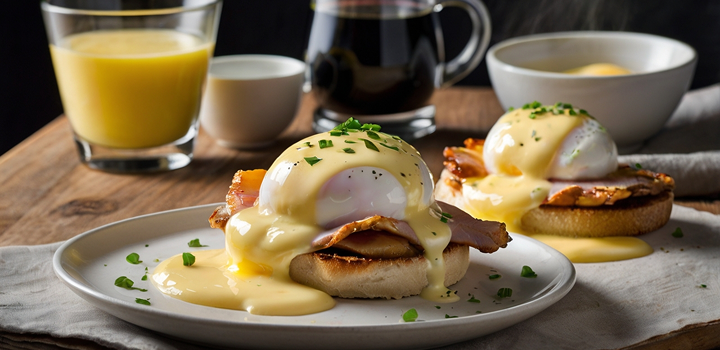
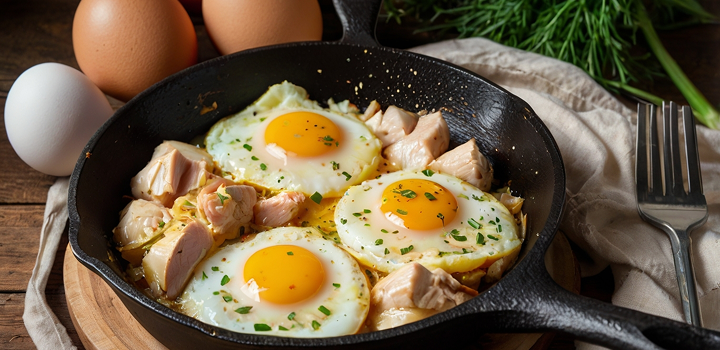
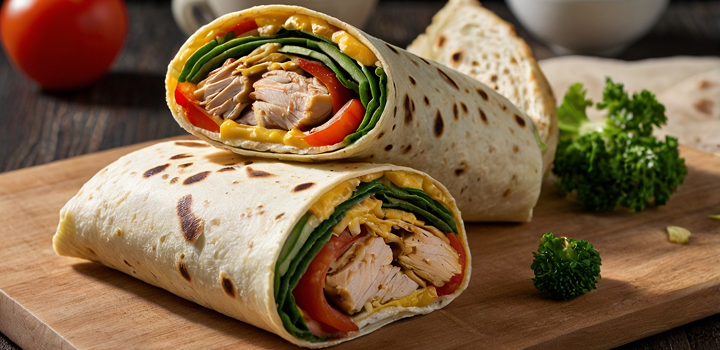
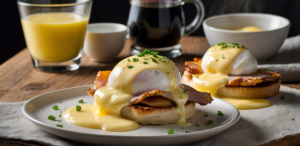
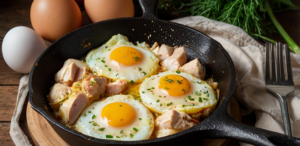

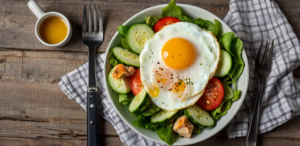
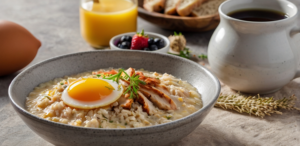
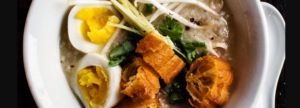
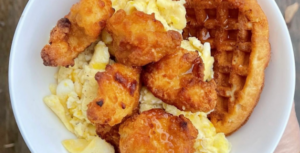

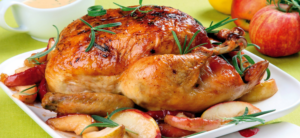

Post Comment